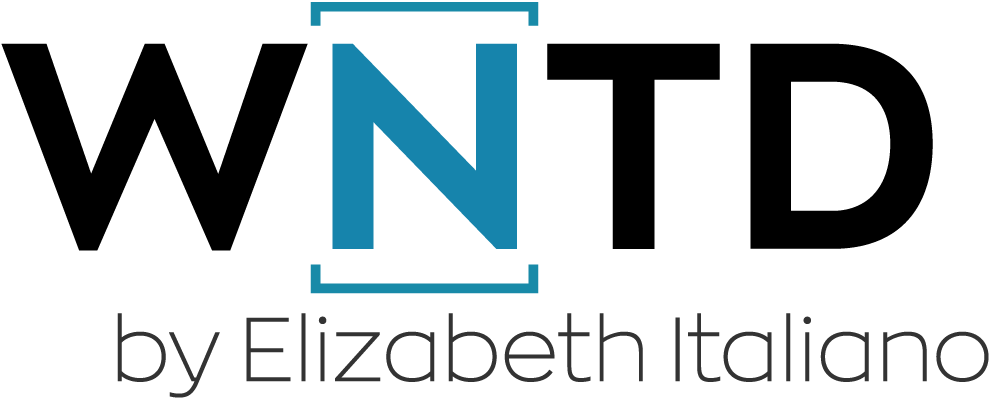Building your organization for scale is one of the most critical factors in the long-term success and overall health of a business, particularly for SaaS businesses. One area that we are most commonly asked about at WnTD is how to scale the customer onboarding process. Customers are often won over or lost in the first 90 days of their post-sale journey. It’s a crucial step to get right and it can have a massive impact on your customer’s success and your organization’s bottom line.
Particularly in today’s subscription economy customers can come and go with relative ease. When customers have a smooth onboarding period that results in realizing value from their purchase the following outcomes are likely for your organization:
- They are more likely to spend additional money with your company by adding users or upgrading their license. At the very least they are more likely to renew.
- They require less ongoing support over the long term. They start using your product correctly and effectively right out of the gate.
These two benefits will improve your revenue and your cost to serve.
I’d like to dive a little deeper into one of the points made above. I talked about customers ‘realizing value from their purchase’. CS professionals often call this, the first time to value. This is a critical component to think about in your onboarding journey. You want to have deliberate steps that will get your customers to not only use your product but use it to the point of achieving value. Your organization should be asking what is the Required Customer Journey that will get our customers to realize their first time to value? This is the first step towards successful product adoption and creating a pattern of usage. CS professionals often talk about making customers ‘sticky’ in order to reduce the potential of churn. However, expecting customers to move towards becoming sticky without a solid onboarding process is kind of like expecting to steer a rowboat without paddles. You are at the mercy of external factors and that’s not a good place to be.
Ok, so we now know that onboarding and achieving first time to value is important … But you may be asking yourself ‘how do you scale this thing!?’.
Glad you asked! Let’s dive into how.
Our evaluation of the customer journey often has a heavy focus on the onboarding process because it lays the foundation for ongoing customer communication and the engagement framework. To have an effective engagement framework it’s important to evaluate the makeup of your customer base so you can determine the best way to engage with them. Scaling your onboarding process sometimes requires reviewing your customer segmentation. If your customer base is varied from small business owners with a single user to enterprise customers with hundreds of users you will likely need to tailor elements of your onboarding process for each customer segment. This will help to inform your customer engagement framework. We often break our engagement framework model into three segments and methods:
- High touch
- Low touch
- Tech touch.
Breaking out your engagement model into these distinct categories of engagement methods is one of the most effective ways to scale onboarding. Let’s start with describing each in more detail:
- High Touch is a 1:1 engagement model and is generally aligned with your high-value target market customers that require frequent 1:1 proactive communication. These are the customers you want to establish a partner and advisor relationship with. An example, of when this is the Required Customer Journey is when you have a client with a large user base, integrations that make setup and onboarding more complex, and numerous use cases.
- Low(er) touch is typically for customers that represent a large volume of your customer base, but with relatively lower contract amounts. Individually these clients are a small portion of revenue but cumulatively make up a material portion of your monthly or annual recurring revenue (MRR/ARR). Low touch is where the designing process for scale is most critical. It is a combination of proactive tech touches (often referred to as 1:Many reach outs) with less frequent 1:1 communication with a CSM.
- Tech touch is leveraging technology to communicate to large groups of your customers with a 1:Many process. For example, this can be done through campaigns to inform of a new product feature, or by emails that are pre-written and triggered to send to customers based on product usage, or webinars put on by a CS team member for a group of customers. It is used in a combination of scenarios, which we get into in more detail in our best practices below, but for now suffice it to say it’s a 1:Many customer outreach model that helps you scale across a broad customer base. It is also particularly important for customers that are not within your ideal product-market fit. It allows you and your CSMs to focus time and attention on your customers that are within your target market fit that can be successful with your solution over the long term. You should be selling to the right customers anyway, but we’ll leave that topic for another day.
It’s important to note that low touch and 1:Many engagement models and methods are not for the purpose of avoiding speaking to customers. If time was not a finite resource we could offer the same level of 1:1 communication to all customers, however, that is not the reality. That’s why it’s so critical to evaluate each customer segments Required Customer Journey and provide an engagement framework that is a variety of high, low and tech touch methods that have the explicit purpose of helping customers achieve first time to value and product adoption. Even for so-called ‘bad fit’ customers, if you take money from a customer and they are not a good fit you still owe them a level of support and help.
So now that we’ve gone through the importance of onboarding and described approaches on how to scale it across your customer base, let’s review some best practices you can put in place and how you can leverage each engagement method to help improve your customer’s onboarding experience. This will ultimately help to increase their value to your business over time.
Onboarding Best Practice #1
Create a prescriptive setup and implementation process. When designing an onboarding program that will help your customer get started on the right path to be successful long-term, determine what the exact steps are that your customers need to take in order to ‘go live’ and realize time-to-value as quickly as possible with your product. Be prescriptive about what steps and actions need to be completed. Once you have those steps outlined, put them in a customer facing format and share with all of the appropriate stakeholders within your customer’s organization that are involved in the onboarding process.
High Touch – Create pre-defined onboarding calls and training sessions that are designed to get your customers set up and using the product properly. These sessions should all move the needle towards getting your client to the first time to value. Provide setup assistance and training sessions on your platform that includes best practice tips. Educating the customer on both product and industry best practices can set them up for long-term success and sets the tone for your CS organization to be seen as a true partner and not just a point of contact.
When creating your onboarding program ensure that your training is conducted in a way that empowers the customer to use the product themselves. Make sure they are hands on. You want to avoid scenarios where the CSM does all of the work for your clients as this is not scalable across all high touch clients. Empower your customers to take ownership.
Low Touch – This can be a combination of tech touches and 1:1 interaction. Educational material and tech touches can augment and bridge the gap between less frequency proactive 1:1 communication. For example, provide helpful onboarding collateral such as a ‘Getting Started’ kit that provides the customer with a comprehensive map of how to set up and use your product successfully. Provide content in easily digestible chunks that provide the right level of information for each stage of setup and learning. At the point of purchase, it’s also important to inform your customers of all available resources and provide clarity on what resources to use and when. For example, when and how to contact Support vs the Customer Success Management team.
I’ll add a caveat to this approach – how low touch you go depends on the complexity of your product and on your customer base. We highly recommend reviewing your customer segmentation and requirements before deploying this model. Consider the Required Customer Journey your customers need in order to be successful.
Tech Touch – Contextual guides and in-app tutorials are arguably the most effective approach. Contextual guides allow your customers to learn your platform, with the help of educational content, without having to leave your product. As the name contextual guide implies, it educates your customer based on the context of where they are in your platform and what actions they are taking. For example, if they are setting up their account information, then a contextual guide may direct them to add the correct user permissions for each account user so the customer group has the appropriate access and experience. Again, as with low touch, the complexity of your product may have an implication on how far contextual guides and in-app tutorials will take a user and of how prescriptive you can be in a tech touch. Ultimately, it’s best practice to have a user friendly design but if that is not the case and if it will take some time to become more user friendly then it’s important to consider how much tech touch is appropriate.
If you do not have the resources to implement contextual guides an alternative is an automated email journey. There are two popular approaches to this method. One, is triggering emails based on product usage (or lack there of) or secondly, triggering emails based on a time frame. In approach number one create a series of emails that get triggered to customers based on what stage they are at in their product setup and onboarding journey. Alternatively, you can create them based on certain days within their onboarding journey if you are unable to tigger emails from product usage. For example, day one could be a welcome email with instructions on how to login and change their settings, day 3 could be how to import data, and so on. This approach does make some bold assumptions that each user will onboard at the same pace. In order to avoid frustration with this approach, include a full onboarding guide (such as the Getting Started Guide mentioned above) with your welcome email so users can go at their own pace if that is their preference.
Onboarding Best Practice #2
Establish milestones that you know the customer must achieve in order to be successful. The prescriptive steps mentioned above should lead customers to these milestones. For example, if you are setting up a CRM an important milestone in your onboarding journey would be adding customer data. Assuming part of the setup process is uploading data via a spreadsheet then one of the prescriptive steps could be: ‘Format the data in <this> specific format as it will allow for cleaner data once uploaded.’ This leads to the milestone of having all data imported and ready to use in the CRM.
Once you’ve established what your first time to value is you have to ensure your customer realizes that value. Your prescriptive steps should lead to milestones and your milestones should result in your customer achieving their first point of value.
High Touch – Have your CSM setup regular calls with the customer. During the onboarding stage we’d recommend weekly or bi-weekly calls, but as mentioned above, this depends on your coverage model and complexity of your product. But it’s not enough to simply set up calls. Create agendas centred around milestones that lead to first time to value. Work with your customers to establish measurable goals then create timelines and additional milestones as required. Clearly align outcomes from your solution with their goals. This is a very proactive approach that requires CSMs to act as an advisor to their customers.
Low Touch – The low touch approach is best done with some human interaction. Low touch doesn’t equate to no human touch. Calls in a low touch model can be done on a monthly or quarterly basis. However, with calls scheduled this far apart you need to supplement their onboarding journey by leveraging technology. One example is implementing product usage alerts that get sent to CSMs that inform the team of low usage or inactive users. This can be set up through your software or through a CSM platform. If the CSM receives an alert or notices product usage is low, this is their queue to jump in and intervene. This is more of a reactive approach when customers fall off track in their onboarding and are not following the prescribed steps and best practices as outlined in your quick start guide and educational content but can help get a customer back on track and prevent churn.
Other tactics are to create campaigns through email or messaging platforms that get sent out via automation in a 1:Many fashion. You can have these emails come from a CSM so it appears 1:1. And to be honest, there are some that would argue that this is too impersonal. However, when a customer responds to a 1:Many reach out it truly does become 1:1. It’s making the most out of your time when sending relevant information by leveraging technology rather than repeating a task over and over again. This leaves more time for meaningful conversations that will have a big impact and drive value. Think of it this way, the 1:Many communication can be to inform and guide customers. The 1:1 communication time is dedicated to conversations that put CSMs in the advisor seat where they are providing product and industry best practices, helping to establish goals and answering more complex questions.
These platforms and methods can also be leveraged to educate customers on recommended goals, milestones and how to track them. You can create webinars for customers to attend, provide YouTube training sessions or even create a user community and facilitate discussions amongst a group of customers. 1:1 interactions can then be used to dive into topics more deeply as the concepts and ideas have already been introduced.
Tech Touch – The low touch model described above already started to introduce some ideas for tech touch so let’s look at a few requirements for implementing tech touch. One requirement is that you must have the appropriate and relevant content to serve up to your customers. It has to provide some value to them and lead them down a prescriptive path to milestones. Your content should have three main objectives.
- Educate customers with prescriptive content on the exact steps and actions they should be taking. The content should be detailed enough for the customers to self serve but not so detailed that it becomes overwhelming and scares them off. The Getting Started Guide is one example of how to provide this, as it’s essentially a map from step one of ‘sign in’ to the final step of implementation and achieving value.
- Provides milestones and goals they should be looking to achieve. It helps clients to visualize their progress towards realizing value.
- Promote product adoption so the customer becomes ‘sticky’.
You also have to have the necessary tools in place for tech touches, such as a chat system, in-app messaging, a customer success platform, and/or email automation. Chat and automated in-app messages and tutorials provide flexibility in how you connect to customers. Customer Success platforms can provide the ability to trigger messages and alerts based on product usage, and an email automation platform allows you to send html marketing campaigns or 1:Many plain text campaigns from a specific CSM.
With the right tools and content in place your organization can create a very effective and helpful tech touch model.
If these approaches sound familiar, they should as they were discussed above. While you do want the engagement model to differ depending on customer segments and their Required Customer Journey, you want the outcome to remain the same, which is successful product adoption. I felt this was a point worth repeating to confirm it’s importance in each approach.
Onboarding Best Practice #3
Have a variety of training resources that both your customers and CSMs can leverage. In our experience, the way customers prefer to learn can vary greatly from person to person. Some people prefer hands on step-by-step training, where others like to learn on their own. For those that learn on their own their preferred method varies once again. Some select to learn by video, where others choose written step-by-step instructions. With this in mind, consider implementing the following as part of your customer education options:
- In-app tutorials
- Contextual Guides
- Live Training Sessions that both trialing prospects and customers can sign up to and attend together.
- Recorded Training sessions.
- A YouTube channel with training videos
- Quickstart Guides
- Knowledge Base Articles and ‘How To’ Guides
- Paid Professional Services Offering
- Onboarding email journey
- Customer community that is monitored by a Customer Success Manager or Support team member.
High Touch – For your high touch customers the training resources are often a supplement to your 1:1 communications. We recommend it as being part of your overall customer engagement framework.
Low Touch – When engaging with your low touch customers, your 1:1 interaction is often providing the most appropriate training resources for that customer. It’s about enabling them to be successful with your product by putting them on an easy to follow path with the resources that best suits their needs. These resource can in some cases allow a CSM to have a larger customer portfolio as customers are provided the necessary tools to self onboard. It also gives the CSM capacity to not only manage more complex customer questions but also to operate in a more proactive nature.
Eventually (and ideally) your content and onboarding process should be so fine tuned that you are answering common customer questions, before they even have them. This is when you proactively enable your customers at scale.
Tech Touch – The above customer education list is your tech touch strategy. Through 1:Many reach outs and the tools listed above, your organization can provide customers with all of the tools and content required for a successful setup and achievement of first time to value with your product.
In order to put these best practices in place you need to have a solid understanding of your customer base. Complete a customer firmographic analysis and you will be well positioned to create an onboarding process that incorporates high, low and tech touches.
Not sure where to start? Or questions on implementing this model? Comment below or contact us and let us help.




